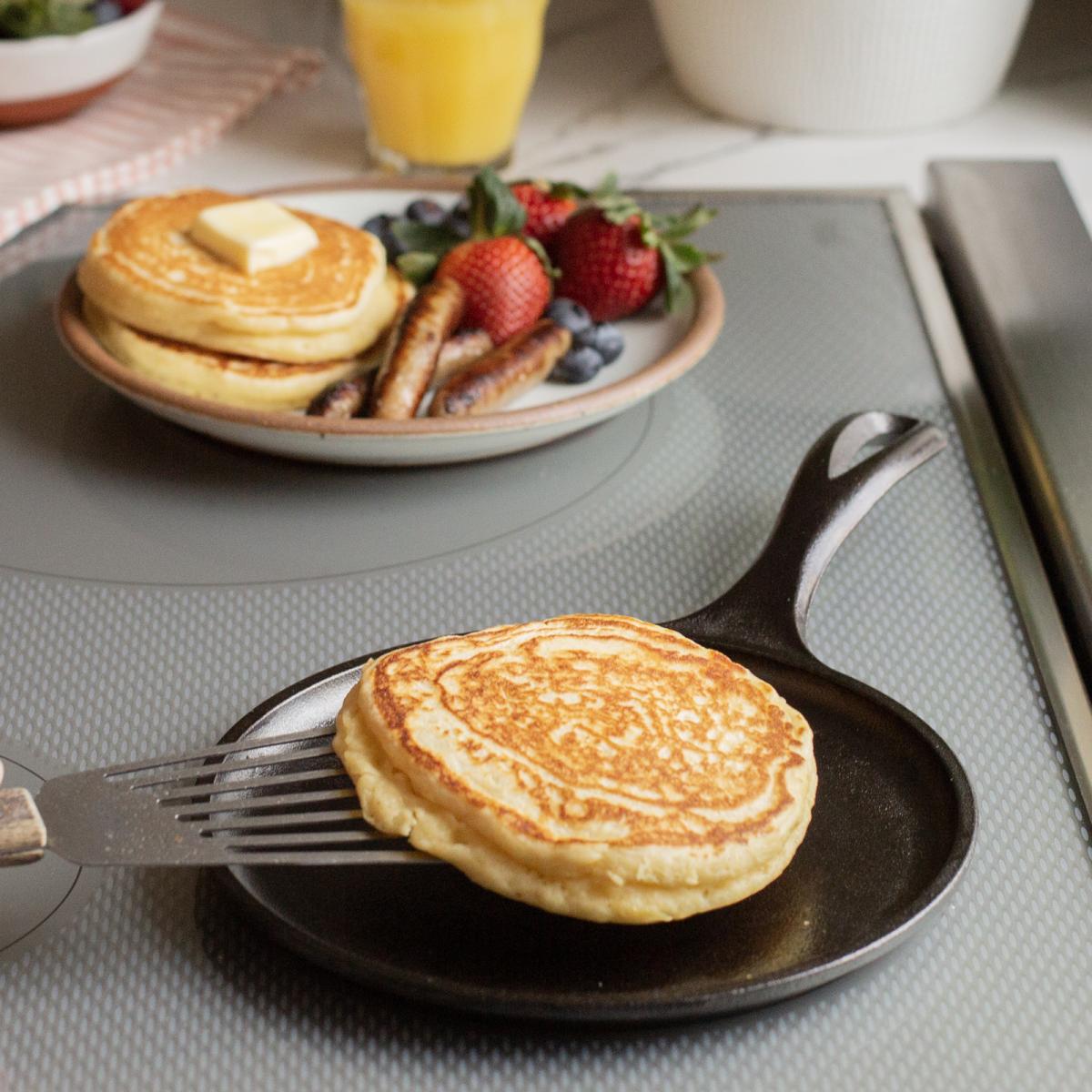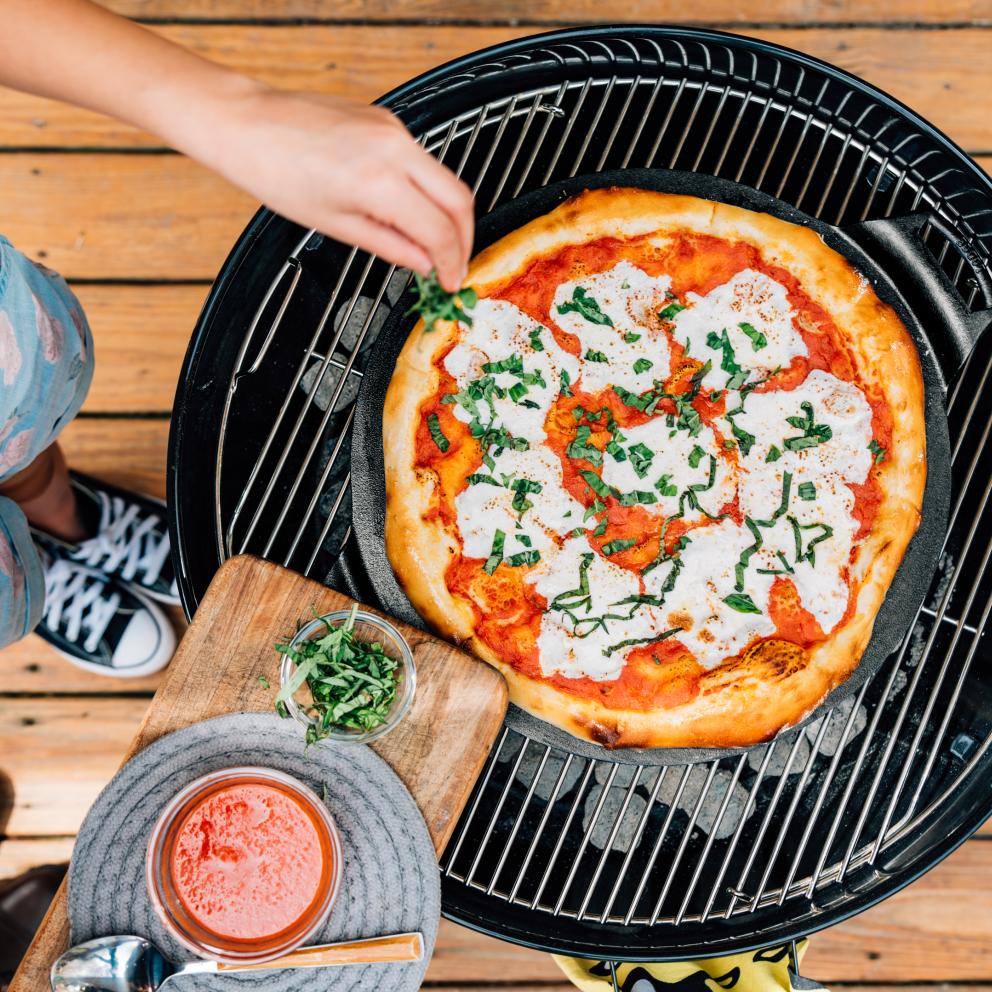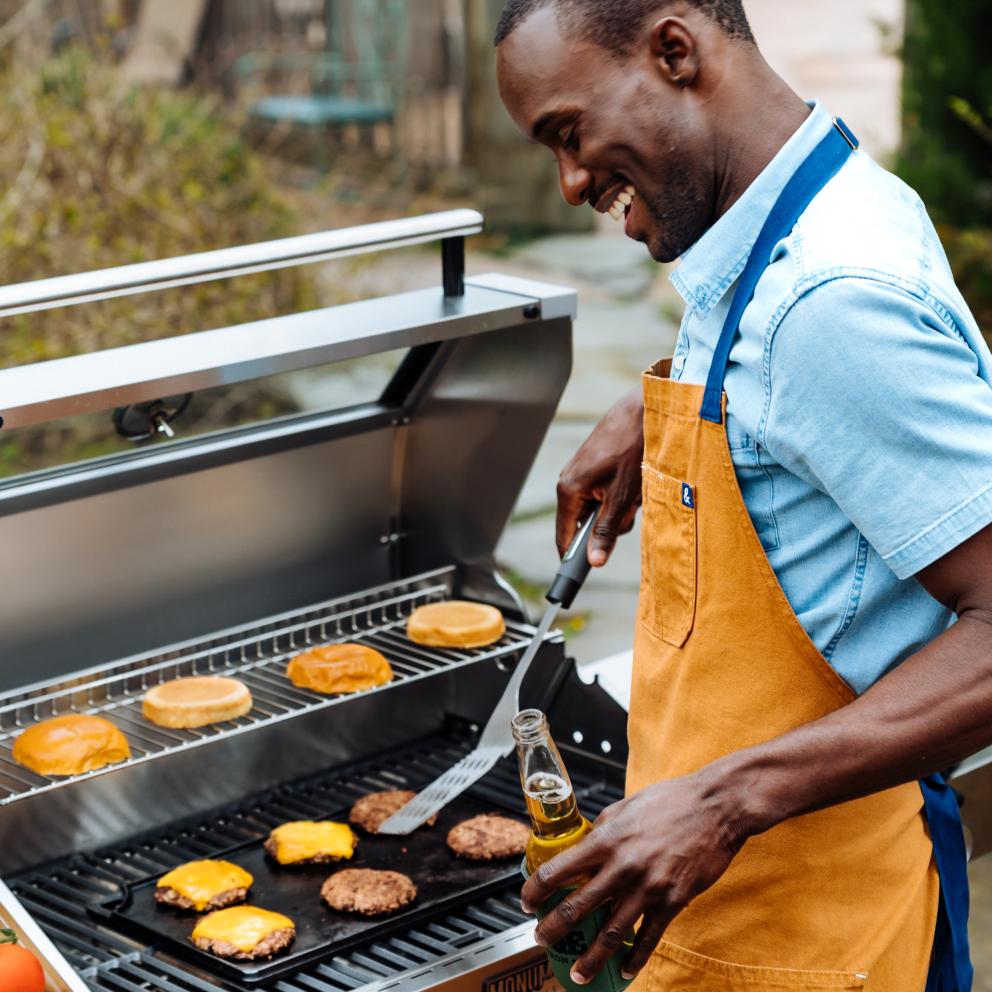How to Use Cast Iron Over Any Heat Source
Cast iron is one of the only pieces of cookware that you can easily take from kitchen to campfire. And that’s a big part of why we love it! Because it can withstand high temperatures (up to 650˚ F, in fact!), it’s a great option for almost any heat source. No matter where you like to cook, we’ve got tips and tricks for using cast iron on electric, induction, and gas cooktops, as well as gas grills, charcoal grills and campfires.
Can I use cast iron on any cooktop? Yes!
Electric Cooktops
Electric cooktops provide a nice, even heat to your cookware, which prevents hot spots that cause food to cook unevenly and stick. However, electric burners can be less responsive to temperature adjustments, meaning it might take your skillet longer to heat up and cool down. Always preheat your cookware and make gradual adjustments in temperature. With a little patience and experimentation, you’ll be able to find just the right heat.
Some home cooks are nervous about using cast iron on electric stoves—or any heat source with a glass cooktop—because they’re afraid of scratching or cracking the surface. With careful use, this shouldn’t be a problem. We recommend gently picking up and setting down your cookware, rather than sliding it from one burner to another.
Induction Cooktops
Induction cooktops use an electromagnetic field to transfer heat to cookware containing ferrous metal. Iron is a ferrous metal, which makes cast iron perfect for induction. Copper and aluminum, on the other hand, are non-ferrous metals and generally aren’t compatible with induction cooking. Induction cooktops don’t have an exposed flame and they only conduct heat when you have a piece of cookware placed over the burner. This makes them a safer alternative, especially when you have young chefs helping in the kitchen.
Because induction requires direct contact between the cooktop and cookware, you’ll want to choose pieces that have a level bottom. Induction cooktops are incredibly efficient at heating cookware. That’s why we recommend using a lower temperature than you would on other types of cooktops. Want to learn more? You can read our full guide to induction cooking, here.
Gas Cooktops
Gas cooktops heat up quickly and are very responsive to adjustments in heat. Plus, the flame provides visual cues to help you dial in the temperature. Compared to electric and induction cooktops, gas ranges tend to heat cookware a little more unevenly. Choose a burner closest to the size of your cookware to help the cooking surface heat evenly.
Can I take cast iron outside? Big yes!
Gas Grill
Cast iron will transform your gas grill and really help you step up your grilling game! Pop a cast iron skillet or griddle on the grill to prepare small or delicate foods that are difficult to cook directly on the grill grate—think fish, veggies, pizza, and smash burgers. Or use a dutch oven to simmer baked beans while you cook the brats directly on the grill. You can say goodbye to trips from the grill to the kitchen!
Just like on your stove, you’ll want to preheat your cast iron to medium-high. This can take 5-10 minutes, depending on your grill. If your grill has a lid, closing it can help your cookware to preheat more quickly. Cast iron has great heat retention, so after you preheat, you may need to turn down your heat. You can control the heat by adjusting the temperature of your grill and moving your cookware closer or further from the heat source. Generally, the middle and back of the grill will be the hottest, while the heat on the edges will be weaker.
Charcoal Grill
We use a Chimney Starter to kickstart the grilling process. Light the charcoals and allow them to heat for approximately 10 minutes, or until the coals gray over. Then, adjust the grill vents to dial in your temperature. Make sure to choose a piece of cookware that’s large enough to accommodate what you’re cooking, while also leaving a little room around the edges for airflow. And don’t forget to use an oil with a high smoke point, like vegetable or canola oil. Otherwise, your oil may burn and impart unpleasant flavors to your food. If your grill doesn’t have a lid, you can create one using a skillet. This is a great way to trap heat when you need to melt cheese over burgers or finish cooking a large steak.
Campfire
There’s nothing better than cooking under the stars! Campfire cooking is a fun challenge, and the delicious and smoky results simply can’t be replicated in the kitchen. Cast iron brings the durability needed to withstand the heat and elements and gives you the versatility to cook almost anything outside. The hard part? Getting the right temperature. We recommend using coals, rather than cooking over the flame directly. This is another situation when a Chimney Starter comes in handy. You can increase and decrease the number of coals you’re using to get the perfect temperature. And the “right number of coals” can fluctuate based on temperature and humidity. Be ready to experiment. The results are worth it! Want more tips on camp cooking and cleanup? Check out our guide.
More questions? We've got answers!
Can I use cast iron on glass-top ranges?
Yes! Cast iron is safe to use on glass-top electric and induction ranges. The bottom of our cookware is designed to be very smooth, so it won’t scratch your stovetop. If you need to move your skillet to another burner, gently pick it up and set it back down, rather than slide it from burner to burner.
Which heat sources are best for enameled products?
We recommend using enameled cast iron on any stovetop (gas, electric, or induction) and in the oven. We do not recommend enameled pieces for outdoor use because gas grills, smokers, and campfires can affect the finish of enameled cookware.
What if a heat source isn’t big enough for my cookware?
It is important to match your cookware to the size of your burner. Larger cookware on smaller burners will create hot spots. Uneven heat can warp and even crack your cookware.
Can I use a griddle across two stovetop burners?
Yes! Choose two burners that are near each other and closest to the size of your griddle. Make sure to set both burners to the same temperature and give your cookware time to preheat. Many electric and induction cooktops even have a bridge burner that heats the gap between burners for more even cooking.
How do I preheat cast iron?
Generally, we recommend preheating your cookware for 3-5 minutes on medium-low heat. This prevents thermal shock, which can damage your cookware.
How can I test to see if my cookware is ready?
The easiest test is to splash your pan with a few drops of water. If the water dances when it hits the pan, you’re at the right temperature. If the pan is too hot, the droplets will evaporate quickly or the oil in the pan will start to smoke.
What should I do if my cookware gets too hot?
Easy! Just remove your cookware from the burner for a few minutes to cool down and turn down the temperature of your burner before returning the pan.
What temperature should I use for cast iron cooking?
Cast iron is built to handle the heat, but that doesn’t mean you need to crank up the temperature when you cook. In fact, high-temperature cooking can leave you with burnt, stuck-on food. The right temperature can depend on what you’re making and the desired outcome. For most cooking needs, a medium-high will provide the best results. Everyone’s cooktop is different, so we recommend starting low and increasing the heat as needed.



